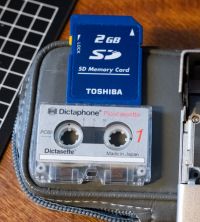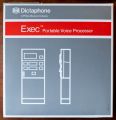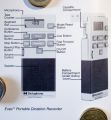Difference between revisions of "Dictaphone 4250"
From Purple's Collection
Jump to navigationJump to searchm (Added location) |
|||
| (2 intermediate revisions by the same user not shown) | |||
| Line 4: | Line 4: | ||
|status=in | |status=in | ||
|state=Good | |state=Good | ||
| − | | | + | |identifier='''Serial:''' 011667 |
| + | |notes=In original box, box has some damage | ||
| + | |location=Storage 1 | ||
}} | }} | ||
| Line 37: | Line 39: | ||
Dictaphone 4250 manual.jpg|Description of buttons | Dictaphone 4250 manual.jpg|Description of buttons | ||
</gallery> | </gallery> | ||
| + | |||
| + | == Maintenance log == | ||
| + | |||
| + | None | ||
[[Category:Portables]] | [[Category:Portables]] | ||
Latest revision as of 21:40, 12 October 2020
About
The Dictaphone 4250 is a dictation recorder from around 1985 made out of aluminium. This recorder was quite advanced for the time and offered a useful feature called letter cues.
These cues allowed you to quickly fast-forward through the tape and have it stop at each cue, making it easier to find separate recordings.
These recorders were commonly used for executives to record (small) conferences or letters, which would later on be written out by a transcriptionist.
Pico-cassette
This recorder uses (one of) the smallest cassette(s) available called the "pico-cassette", the size of this cassette is 25x36x4mm
Pictures
Maintenance log
None











